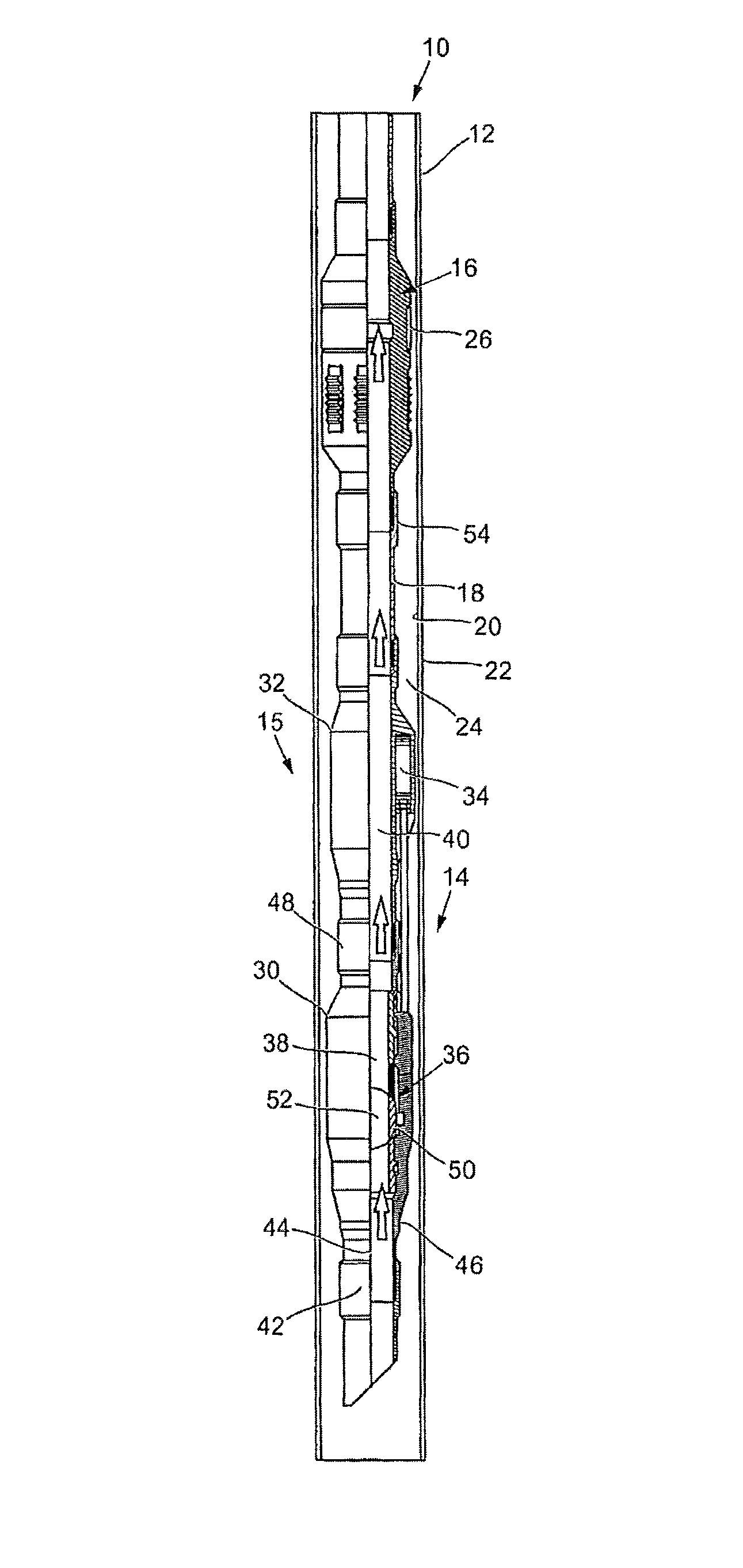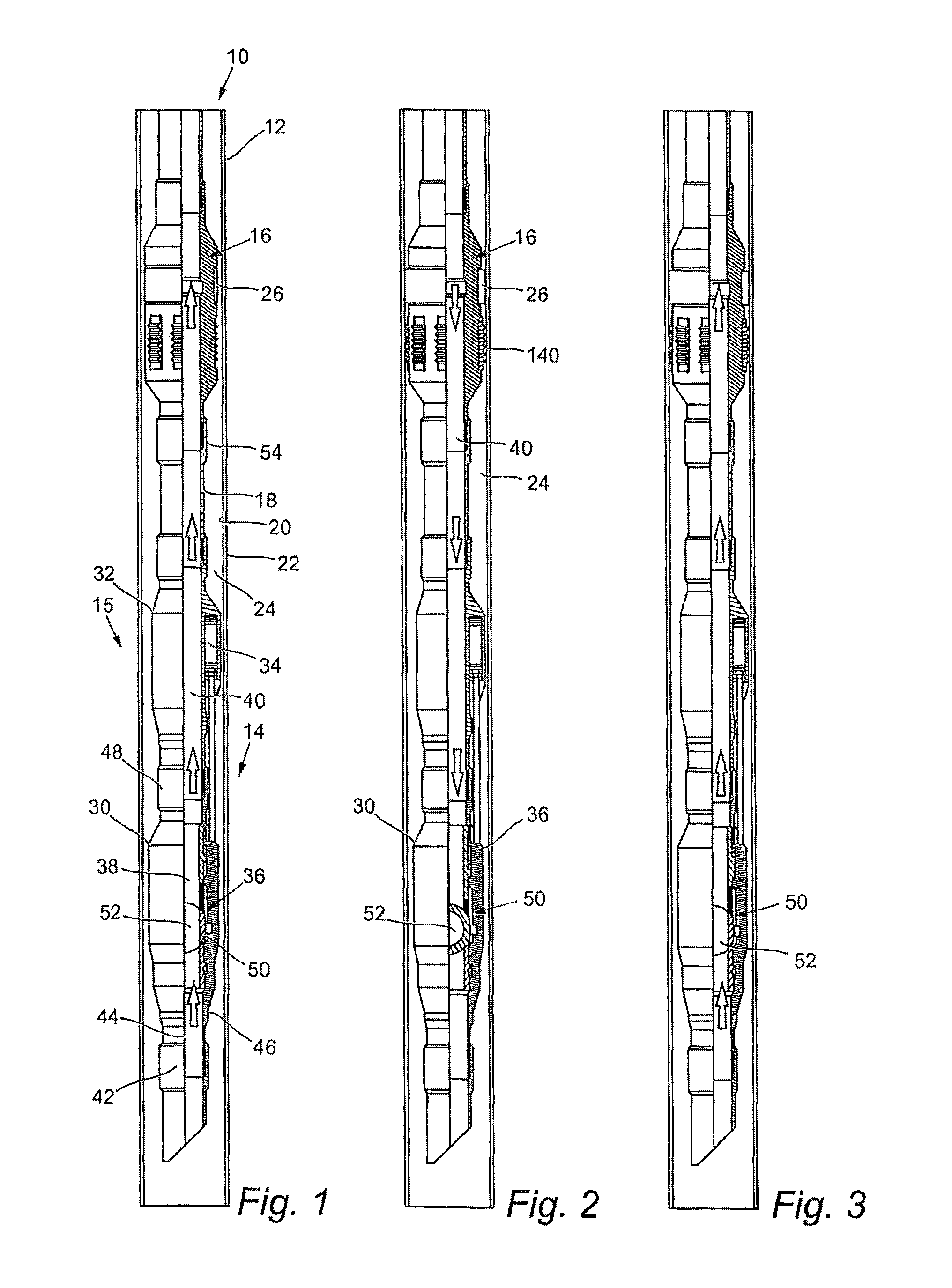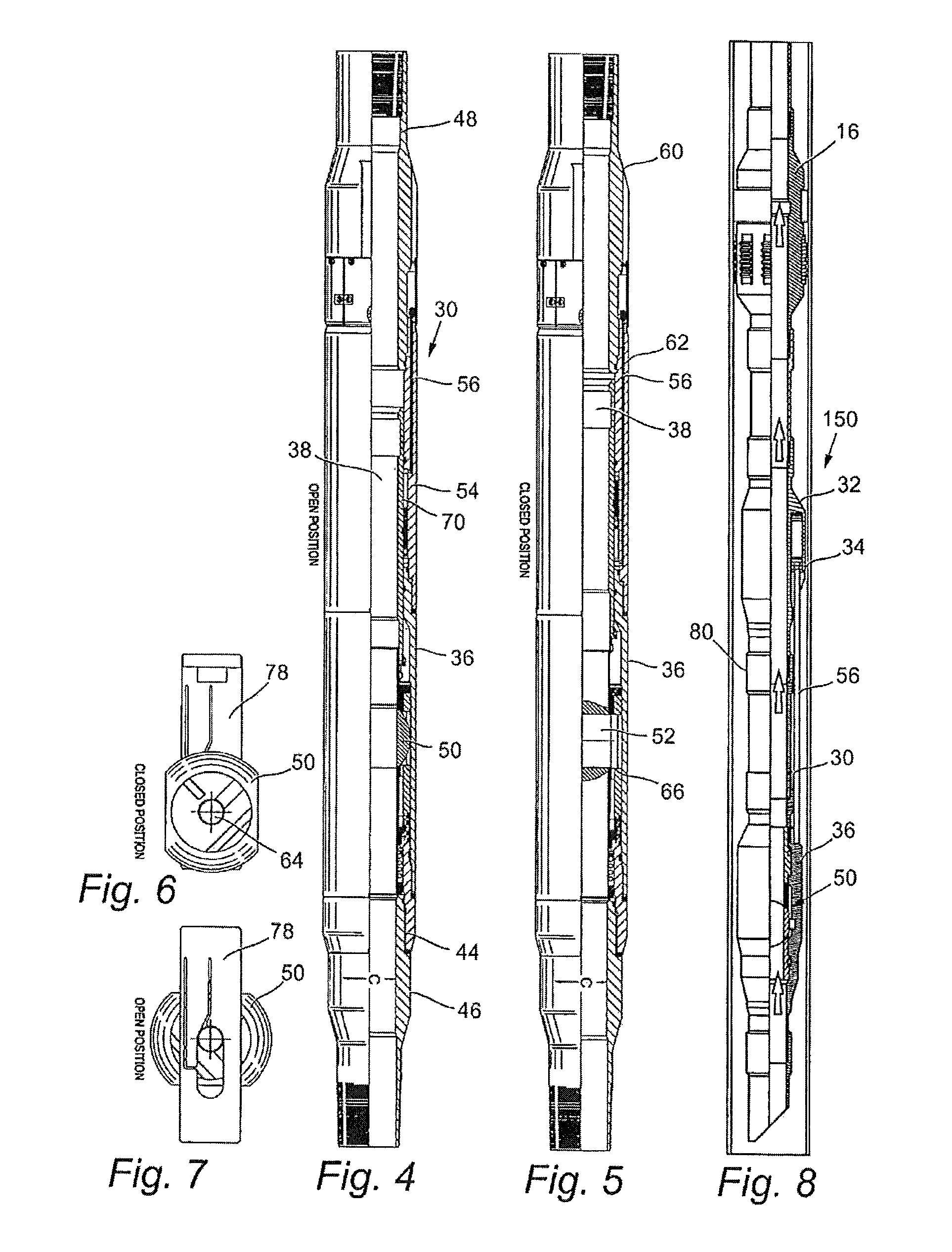Electronic completion installation valve
a technology of installation valve and electronic components, which is applied in the field of valves, can solve the problems of increased completion time, increased cost, and dangerous running of plugs, and achieves the effects of reducing the risk of plug failure, reducing the safety of plug failure, and increasing the time to achieve completion
- Summary
- Abstract
- Description
- Claims
- Application Information
AI Technical Summary
Benefits of technology
Problems solved by technology
Method used
Image
Examples
Embodiment Construction
[0057]Reference is initially made to FIG. 1 of the drawings which illustrates a completion string, generally indicated by reference numeral 10, being run in a well bore 12 according to an embodiment of the present invention. It should be noted that wellbore 12 is cased i.e. it is lined, having been pre-drilled prior to insertion of the completion string 10.
[0058]Completion string 10 comprises a plurality of tubing sections which are cylindrical pipes fitted together via screw fittings at either end. At a lower end 14 of the string 10 there is located a production packer 16 and a completion assembly 15, according to an embodiment of the present invention.
[0059]The completion assembly 15 comprises three sections. From above, the first section is an electronic actuating mechanism 32. This is connected to a hydraulic pump 34 which in turn is connected to a valve 30 containing a ball valve mechanism 36 towards the lower end 14 of the string 10. These parts will be described later in grea...
PUM
 Login to View More
Login to View More Abstract
Description
Claims
Application Information
 Login to View More
Login to View More - R&D
- Intellectual Property
- Life Sciences
- Materials
- Tech Scout
- Unparalleled Data Quality
- Higher Quality Content
- 60% Fewer Hallucinations
Browse by: Latest US Patents, China's latest patents, Technical Efficacy Thesaurus, Application Domain, Technology Topic, Popular Technical Reports.
© 2025 PatSnap. All rights reserved.Legal|Privacy policy|Modern Slavery Act Transparency Statement|Sitemap|About US| Contact US: help@patsnap.com



